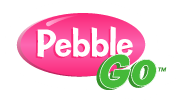An elementary school librarian speaks out about how using youth-friendly databases helps increase literacy among English language learners.
In classrooms that include both English language learners and native English speakers, educators face the unique challenge of teaching these two groups at the same time. When teaching regular-paced lessons in English, educators can struggle with how to ensure their ELL students are understanding. However, due to funding issues, it may not be possible to give these students the specialized language instruction they need separately from the mainstream class. Given this dilemma, many schools have chosen to take a different route when it comes to the inclusive classroom.
At Bean Elementary, we have about 50-60% ELL students. We are a Title I school: about 90% of our students are eligible for free/reduced lunch. We are also a dual-language school where pre-K–5th grade have two classes that are taught in both English and Spanish. In these classes teachers conduct Monday, Wednesday, and Friday classes in Spanish; and Tuesday and Thursday classes in English.
To help support ESL/ELL students, we also have a designated Spanish section in the library, and we provide multiple technology resources to assist our ELLs. One of these resources is a kid-friendly digital database called PebbleGo, which has non-fiction articles in both English and Spanish. A read-aloud feature helps teachers looking to bridge the gap between Spanish and English—even teachers who are not dual-language use this feature when to support ELL/ESL students in their classrooms. Plus, the non-fiction content helps introduce academic vocabulary—words like “habitat”—that gives students the content knowledge they need, regardless of the language in which they have the most proficiency.
When it comes to reading, vocabulary is the biggest area in which I see ELL students struggle. Translating the nuances of meaning from one language to another can be difficult, particularly for younger students who simply don’t yet have the English vocabulary to read English fluently. PebbleGo helps by providing dictionary definitions for words that may be troublesome for students to understand the meaning of, and the read-aloud component helps them understand the proper way to say these words. It allows them to learn new things, even if they have difficulty reading.
The simple visual layout of PebbleGo also creates a friendly reading experience for our ELLs. It provides pictures, video, and graphic organizer resources. Even for native English speakers, these resources and features help support reading and comprehension skills. The simplicity of the design, allows our students to search and discover new things without feeling frustrated or hopeless. They learn information, whether in their native language or not, and in this, in turn, increases their enthusiasm for reading and research.
Teachers are always looking for multiple resources for research, and PebbleGo has helped them teach their students about finding reliable research sources. In an age when “fake news” has become the latest buzzword, teaching students about finding credible sources of information is important especially for ELL/ESL students. When English learners are reading nonfiction, their focus is on understanding the words, and it may not occur to them that what they’re reading may be opinion or fiction. Students are naturally trusting of the information provided to them. Teaching research skills at a young age is a great way to teach them about the difference between reliable and non-reliable sources. Students are now growing up in a very technology-based world, and information surrounds them daily. We teach them how to look for valid information and research topics deeply.
As the librarian at Bean Elementary, I believe it’s my job to enhance the knowledge of both the students and staff. I make sure a variety of types of resources are available, and introduce these resources to teachers and students. The library affords everyone in the school the opportunity to explore new resources. PebbleGo has changed how I work with all students, but especially with our ELLs. It has helped me show them different databases and resources available to them, and helped them find information in a fun, engaging, and non-frustrating way.
Being enrolled in a dual-language school benefits both ELLs and native English speaking students. They are each being immersed in another language on a daily basis, which research has shown leads to higher academic achievement and cognitive skills. In addition to this, dual- language programs give students the opportunity to spend great quantities of time with peers from another culture, widening their worldview and deepening their understanding of others. In this type of environment, with the right tools and scaffolds, all students have the chance to succeed.
Melanie Curl is a librarian at Bean Elementary in Lubbock, TX.


